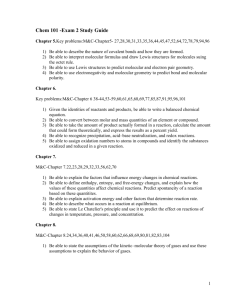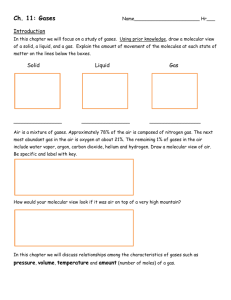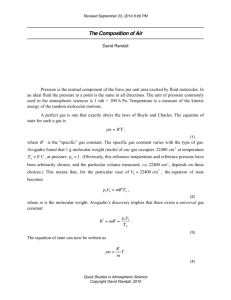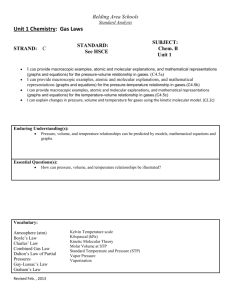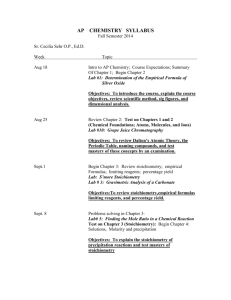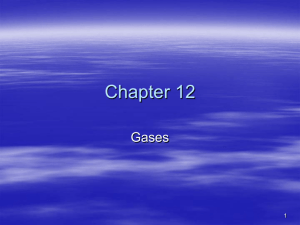Dowd AP Chemistry 01-07-13 Gases
advertisement
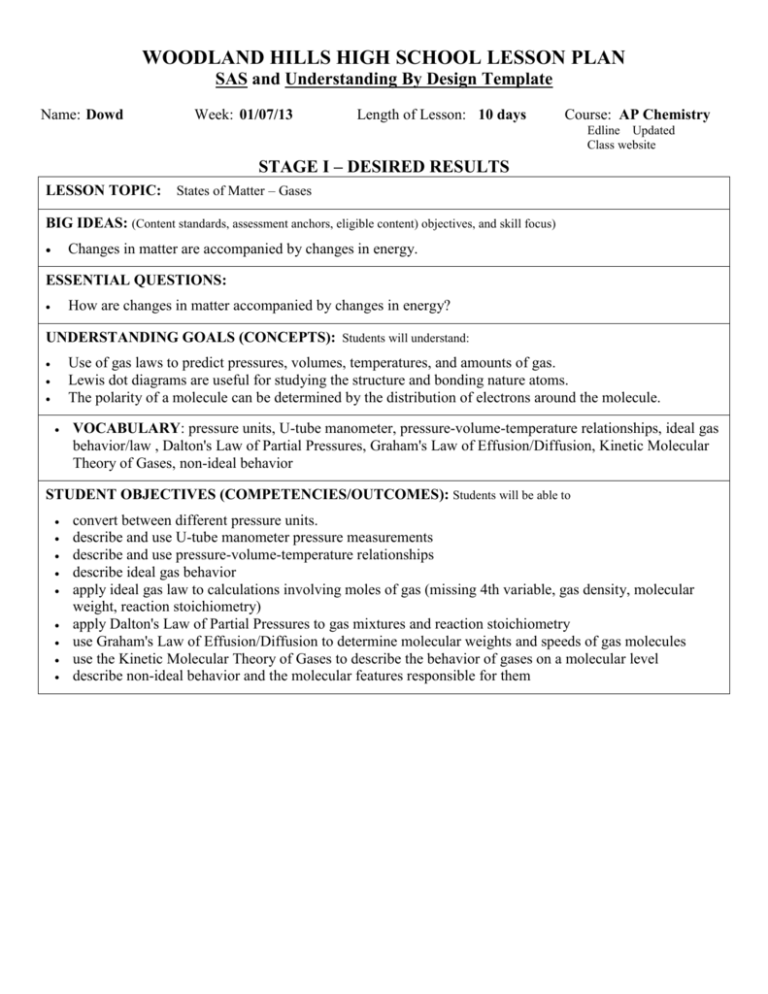
WOODLAND HILLS HIGH SCHOOL LESSON PLAN SAS and Understanding By Design Template Name: Dowd Week: 01/07/13 Length of Lesson: 10 days Course: AP Chemistry Edline Updated Class website STAGE I – DESIRED RESULTS LESSON TOPIC: States of Matter – Gases BIG IDEAS: (Content standards, assessment anchors, eligible content) objectives, and skill focus) Changes in matter are accompanied by changes in energy. ESSENTIAL QUESTIONS: How are changes in matter accompanied by changes in energy? UNDERSTANDING GOALS (CONCEPTS): Students will understand: Use of gas laws to predict pressures, volumes, temperatures, and amounts of gas. Lewis dot diagrams are useful for studying the structure and bonding nature atoms. The polarity of a molecule can be determined by the distribution of electrons around the molecule. VOCABULARY: pressure units, U-tube manometer, pressure-volume-temperature relationships, ideal gas behavior/law , Dalton's Law of Partial Pressures, Graham's Law of Effusion/Diffusion, Kinetic Molecular Theory of Gases, non-ideal behavior STUDENT OBJECTIVES (COMPETENCIES/OUTCOMES): Students will be able to convert between different pressure units. describe and use U-tube manometer pressure measurements describe and use pressure-volume-temperature relationships describe ideal gas behavior apply ideal gas law to calculations involving moles of gas (missing 4th variable, gas density, molecular weight, reaction stoichiometry) apply Dalton's Law of Partial Pressures to gas mixtures and reaction stoichiometry use Graham's Law of Effusion/Diffusion to determine molecular weights and speeds of gas molecules use the Kinetic Molecular Theory of Gases to describe the behavior of gases on a molecular level describe non-ideal behavior and the molecular features responsible for them STAGE II – ASSESSMENT EVIDENCE PERFORMANCE TASK: FORMATIVE ASSESSMENTS: Class discussion Assignments Tests/Quizzes Laboratory experience Observation Notetaking Asking/Answering questions Performing Lab STAGE III – LEARNING PLAN INSTRUCTIONAL PROCEDURES: MATERIALS & RESOURCES: Explicit Instruction Overhead/Board Lab material/equipment Handouts Content Area Reading Presentation Discussion Modeling Demonstration Prelab INTERVENTIONS: Preferential seating Cooperative work Active Engagement Note-taking Partnering Cooperative Education Higher Level Thinking Scaffolding Build on prior knowledge Build vocabulary MINI LESSON: Recall states of matter and molecular visualization Characteristic properties of a confined gas (T, V, n, P) U-tube manometers Empirical Gas Laws: Boyle’s Law; Charles’ Law; Avogadro’s Law; Gay-Lussac’s Law; Combined Gas Law Empirical Gas Laws: Sample problems Ideal Gas Law: intro; variations; sample problems Kinetic Molecular Theory of Gases: Postulates & Impications Grahams law of effusion & rms calculation Real Gases Gas Laws Lab: Prelab, data collection, data analysis ASSIGNMENTS: A20. EOC 5: 23,24,29,30,31,37,40,45,55,102 (Pressure & Simple Gas Laws) A21. EOC 5: 26,27,51,57,62,71,77,80,81,105 (Ideal Gas Law with variations & Mixtures) A22. EOC 5: 85,89,92,93,111,113,123 bonus 130 (Speeds, Effusion, Misc)
